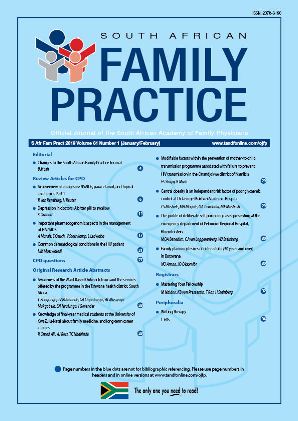Central obesity is an independent risk factor of poor glycaemic control at Dr George Mukhari Academic Hospital
Abstract
Background: Results of previous studies on the effect on glycaemic control of anthropometric measures of obesity, some economic status variables and the presence of metabolic syndrome are not consistent and appear to differ among health institutions. The status of glycaemic control and some of its determinants was investigated among adult black patients with type-2 diabetes mellitus (T2DM) at Dr George Mukhari Academic Hospital (DGMAH).
Method: A random sample of 176 adult black South African patients with T2DM attending the diabetic clinic at DGMAH was investigated in the current study. Fasting blood glucose, glycated haemoglobin (HbA1c), lipid profile components levels as well as anthropometric measures of obesity were measured using standard measuring procedures for these variables. The presence of metabolic syndrome was assessed according to the International Diabetic Federation criteria. Information related to patients’ socioeconomic status was collected by means of a structured questionnaire. Associations between these factors and poor glycaemic control were assessed by means of binary and multivariate logistic analysis.
Results: Glycaemic control was found to be very poor at DGMAH. As low as 16.6% of the study subjects achieved SEMDSA’s 2012 recommended target HbA1c value of less than 7.0%. Whereas binary logistic analysis revealed that marital status, matriculation, increase waist circumference and duration of diabetes > 5 years may lead to poor glycaemic control, multivariate logistic regression analysis indicated that only increased waist circumference was independently associated with poor glycaemic control at DGMAH.
Conclusions: Central obesity appears to be an independent risk factor for poor glycaemic control among T2DM patients at DGMAH.
The full article is available at https://doi.org/10.1080/20786190.2018.1527134

